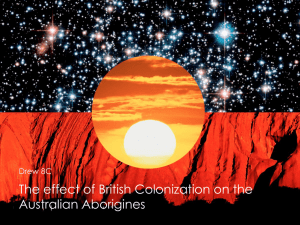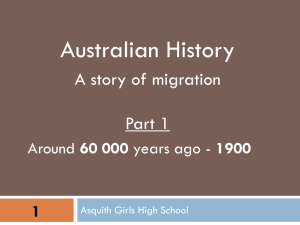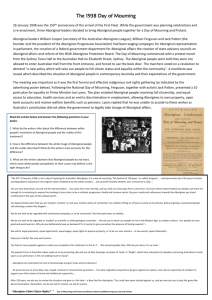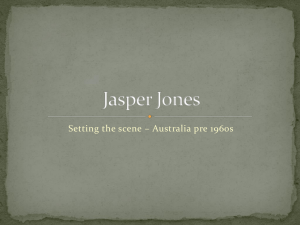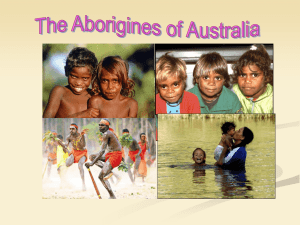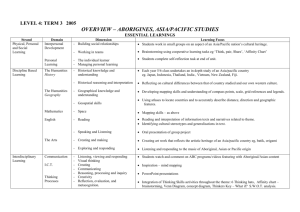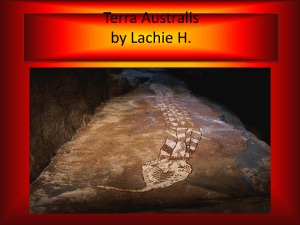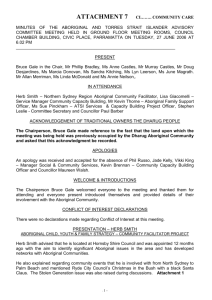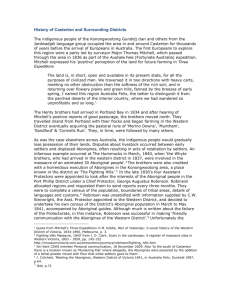lsn_aboriginalheritage
advertisement
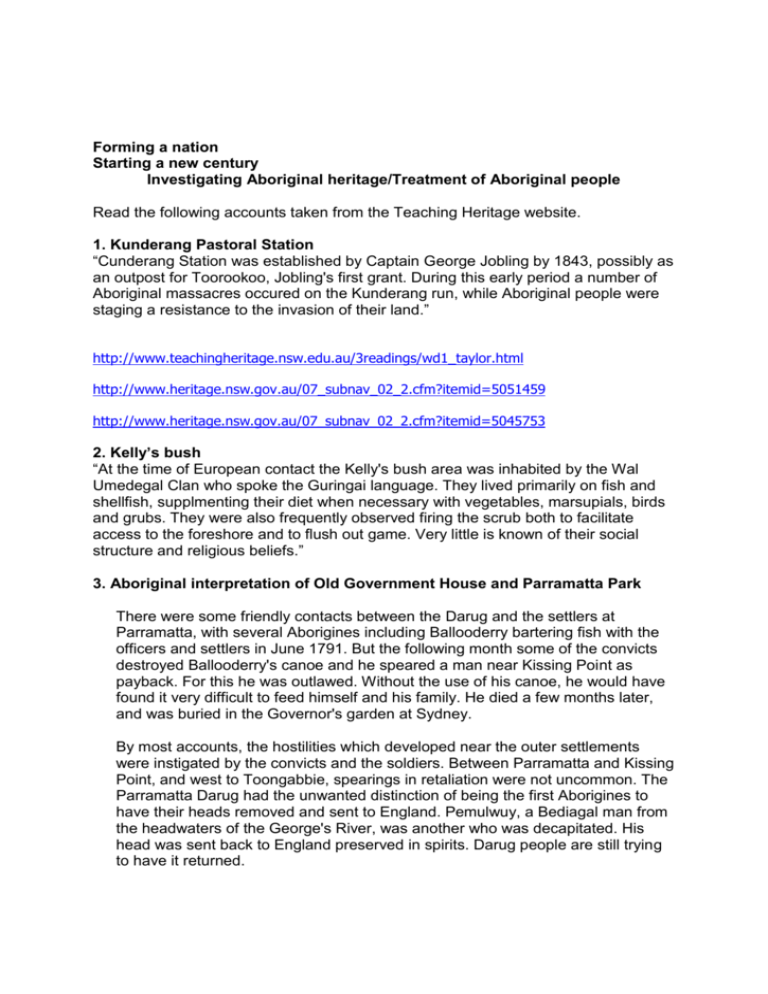
Forming a nation Starting a new century Investigating Aboriginal heritage/Treatment of Aboriginal people Read the following accounts taken from the Teaching Heritage website. 1. Kunderang Pastoral Station “Cunderang Station was established by Captain George Jobling by 1843, possibly as an outpost for Toorookoo, Jobling's first grant. During this early period a number of Aboriginal massacres occured on the Kunderang run, while Aboriginal people were staging a resistance to the invasion of their land.” http://www.teachingheritage.nsw.edu.au/3readings/wd1_taylor.html http://www.heritage.nsw.gov.au/07_subnav_02_2.cfm?itemid=5051459 http://www.heritage.nsw.gov.au/07_subnav_02_2.cfm?itemid=5045753 2. Kelly’s bush “At the time of European contact the Kelly's bush area was inhabited by the Wal Umedegal Clan who spoke the Guringai language. They lived primarily on fish and shellfish, supplmenting their diet when necessary with vegetables, marsupials, birds and grubs. They were also frequently observed firing the scrub both to facilitate access to the foreshore and to flush out game. Very little is known of their social structure and religious beliefs.” 3. Aboriginal interpretation of Old Government House and Parramatta Park There were some friendly contacts between the Darug and the settlers at Parramatta, with several Aborigines including Ballooderry bartering fish with the officers and settlers in June 1791. But the following month some of the convicts destroyed Ballooderry's canoe and he speared a man near Kissing Point as payback. For this he was outlawed. Without the use of his canoe, he would have found it very difficult to feed himself and his family. He died a few months later, and was buried in the Governor's garden at Sydney. By most accounts, the hostilities which developed near the outer settlements were instigated by the convicts and the soldiers. Between Parramatta and Kissing Point, and west to Toongabbie, spearings in retaliation were not uncommon. The Parramatta Darug had the unwanted distinction of being the first Aborigines to have their heads removed and sent to England. Pemulwuy, a Bediagal man from the headwaters of the George's River, was another who was decapitated. His head was sent back to England preserved in spirits. Darug people are still trying to have it returned. 4. Settlers and the Aborigines Watkin Tench, an officer from the First Fleet, noted in September 1790 that he had met two Aboriginal men from Rose Hill, what is now Parramatta Park, and they "expressed great dissatisfaction at the number of white men who had settled in their former territories." The Aborigines saw their lands taken from them, and towns and farms were built where they had once been free to hunt. The settlers felt that it was their right to possess the land, that it was being improved as a result of their labour, and that it was an asset that the traditional owners did not know how to use. As the white population increased, the native animals which the Aborigines relied on for food diminished in number. Thus they not only lost their land but were also facing starvation. The situation was desperate and, understandably, led to desperate responses. David Collins, the Deputy Judge Advocate of the colony, recorded in 1794: "the natives were troublesome again this month … accounts were sent down from Parramatta, of their having attacked, robbed and beaten some of the settlers’ wives who were passing between their farms. One of these women was so severely wounded by a party who robbed and stripped her of her wearing apparel that she lay for a long time dangerously ill at the hospital." This may sound like a harsh attack, but if you consider the circumstances it is understandable why the Aborigines would retaliate for the wrongs that were done to them. Despite these difficulties the settlers continued to consolidate their position. Read about the Collaborative management practices and Aboriginal heritage MiniQs 1. Search this website and the SHR database to find other examples that records events that involved Aboriginals and Europeans in some way. Write a brief description of each one. 2. Conduct a search of your school library resources to locate records on the Local history of your area. Make an annotated bibliography of these resources. 3. Analyse your Local history resources and identify instances of indigenous and European events. 4. Read the following taken from the Teaching Heritage website Local history for up to 200 years, depending on the area we live in, has been two different but overlapping, histories. There is very little Aboriginal and Torres Strait islander history that does not involve the actions of white people. Equally, there is no Australian history that does not include the history of the First Australians. Only when this is recognised and indigenous history is reclaimed at the local level is there any possibility of the overlapping histories becoming a shared history. The Big question In light of the readings and the information you have found about your Local area and the shared history of Aborigines and Europeans give your opinion about: Who owns the past and how should we preserve it? Begin with this statement: “This question has implications for the administration and care of Aboriginal sites, artifacts and human remains.”

